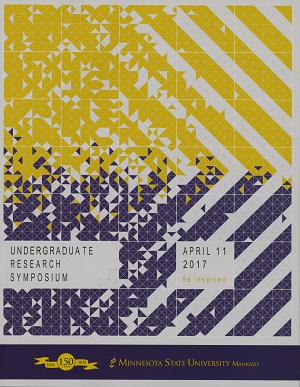Rubric Scoring with Language Samples
Location
CSU Ballroom
Start Date
11-4-2017 2:00 PM
End Date
11-4-2017 3:30 PM
Student's Major
Speech, Hearing, and Rehabilitation Services
Student's College
Allied Health and Nursing
Mentor's Name
Megan Mahowald
Mentor's Department
Speech, Hearing, and Rehabilitation Services
Mentor's College
Allied Health and Nursing
Description
This research compares language samples of third grade students with and without disabilities. Language sampling is an assessment tool that allow Speech-Language Pathologists to evaluate specific areas of a client's ability to produce language through different tasks. The tasks are: informational sample, personal narrative, procedural sample, and story analysis. Language samples were collected, transcribed and analyzed. Each task will be further explored for differences present. Language samples were analyzed using a rubric that evaluated language based on five areas. The five areas that we used to measure, consists of: engagement, organization, voice, language use, and fluency. The purpose of using a rubric is that scores can be standardized to allow for progress monitoring or the documenting of a child's improvement or change in language over a period of time. The rubric we are developing and implementing will be a tool used by Speech-Language Pathologists to increase efficiency in scoring language samples. We analyzed 16 language samples of typically developing third graders and 10 language samples of third graders with disabilities. The results indicate that the rubric is correlated to standardized language assessment (approaching significance).
Rubric Scoring with Language Samples
CSU Ballroom
This research compares language samples of third grade students with and without disabilities. Language sampling is an assessment tool that allow Speech-Language Pathologists to evaluate specific areas of a client's ability to produce language through different tasks. The tasks are: informational sample, personal narrative, procedural sample, and story analysis. Language samples were collected, transcribed and analyzed. Each task will be further explored for differences present. Language samples were analyzed using a rubric that evaluated language based on five areas. The five areas that we used to measure, consists of: engagement, organization, voice, language use, and fluency. The purpose of using a rubric is that scores can be standardized to allow for progress monitoring or the documenting of a child's improvement or change in language over a period of time. The rubric we are developing and implementing will be a tool used by Speech-Language Pathologists to increase efficiency in scoring language samples. We analyzed 16 language samples of typically developing third graders and 10 language samples of third graders with disabilities. The results indicate that the rubric is correlated to standardized language assessment (approaching significance).
Recommended Citation
Davies, Audrey; Kaela Delperdang; and Diane Meyer. "Rubric Scoring with Language Samples." Undergraduate Research Symposium, Mankato, MN, April 11, 2017.
https://cornerstone.lib.mnsu.edu/urs/2017/poster-session-B/2



